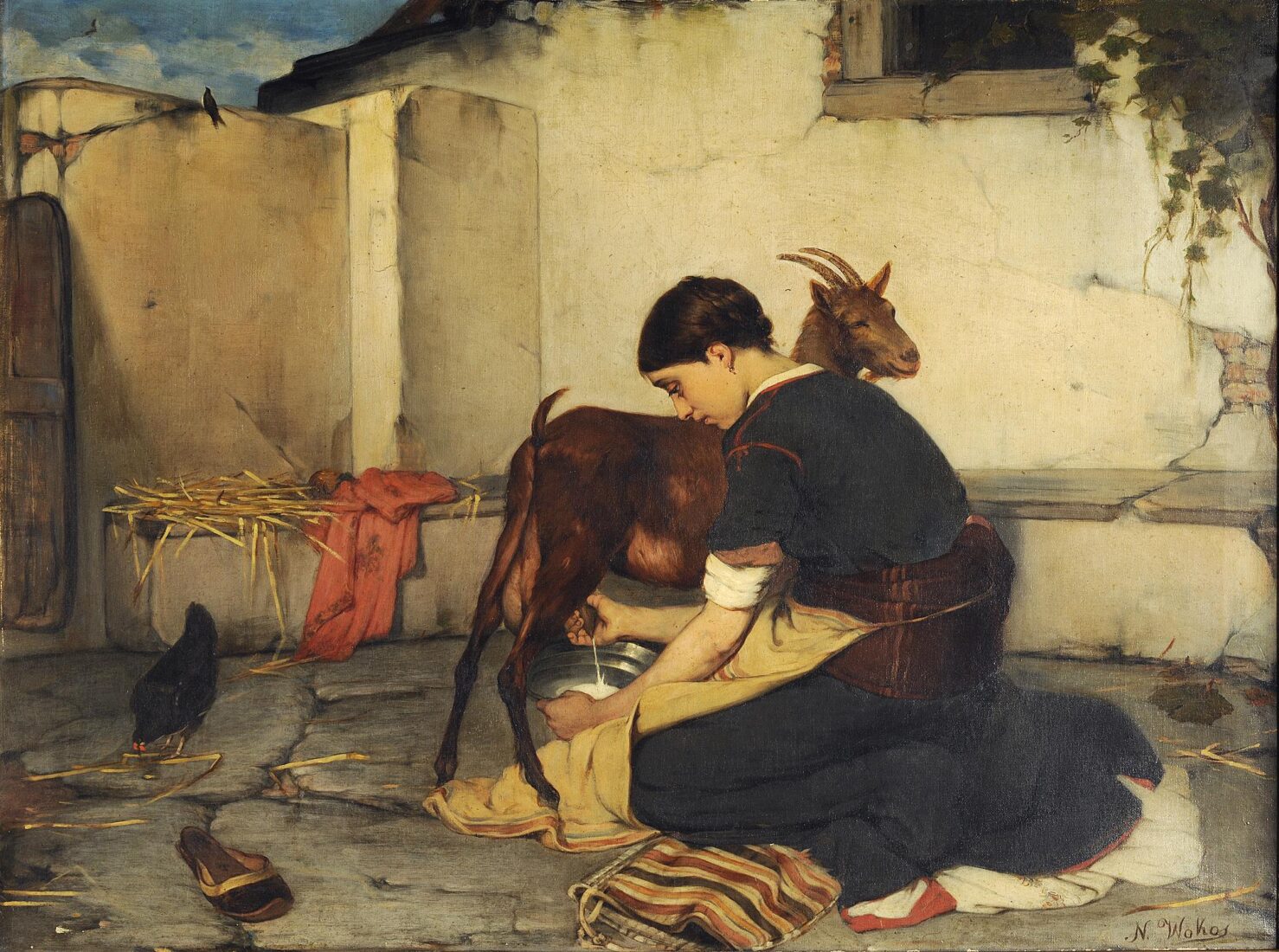

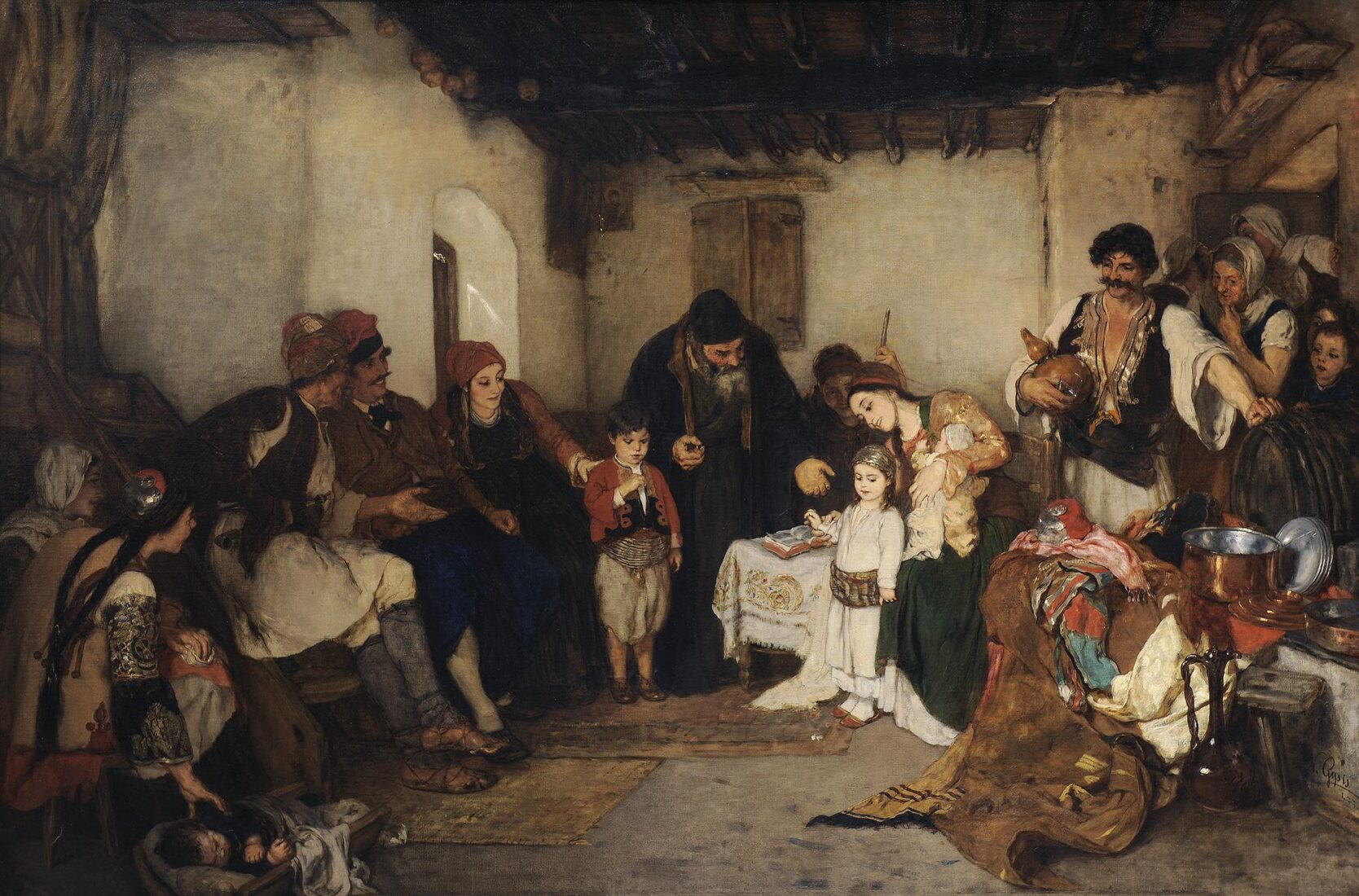
Having received numerous awards, the “Betrothal of the Children”, which exists in two variations, records a custom from Ottoman times. The parents engaged their children while still at a very young age, perhaps in order to protect them from being abducted by Turks. Arranged in a semi-circle in a village home interior, the merry scene is masterfully captured. In the centre of the painting, the priest has already put the ring around the puzzled boy’s finger, while the little girl is looking down, shying away from the old man’s call to come forward for the ring. The parents and other relatives merrily witness the scene. A man wearing the traditional Greek fustanella kilt is holding the wine vessel, a simple water pumpkin, ready to seal the event with a toast. On the right, the artist has placed a pile of utensils and luscious textiles, offering him ample opportunity to show off his skill in capturing profuse colour and variety in textures, from shiny bronze to silk. Warm gold-red hues and white colour prevail.The work was made after Gyzis’ journey-pilgrimage to Greece and the Orient in 1872-3, along with his friend, compatriot and teacher, Nikephoros Lytras. It records his impressions from the colourful world of the Orient, the rich costumes and customs of the Greek people.
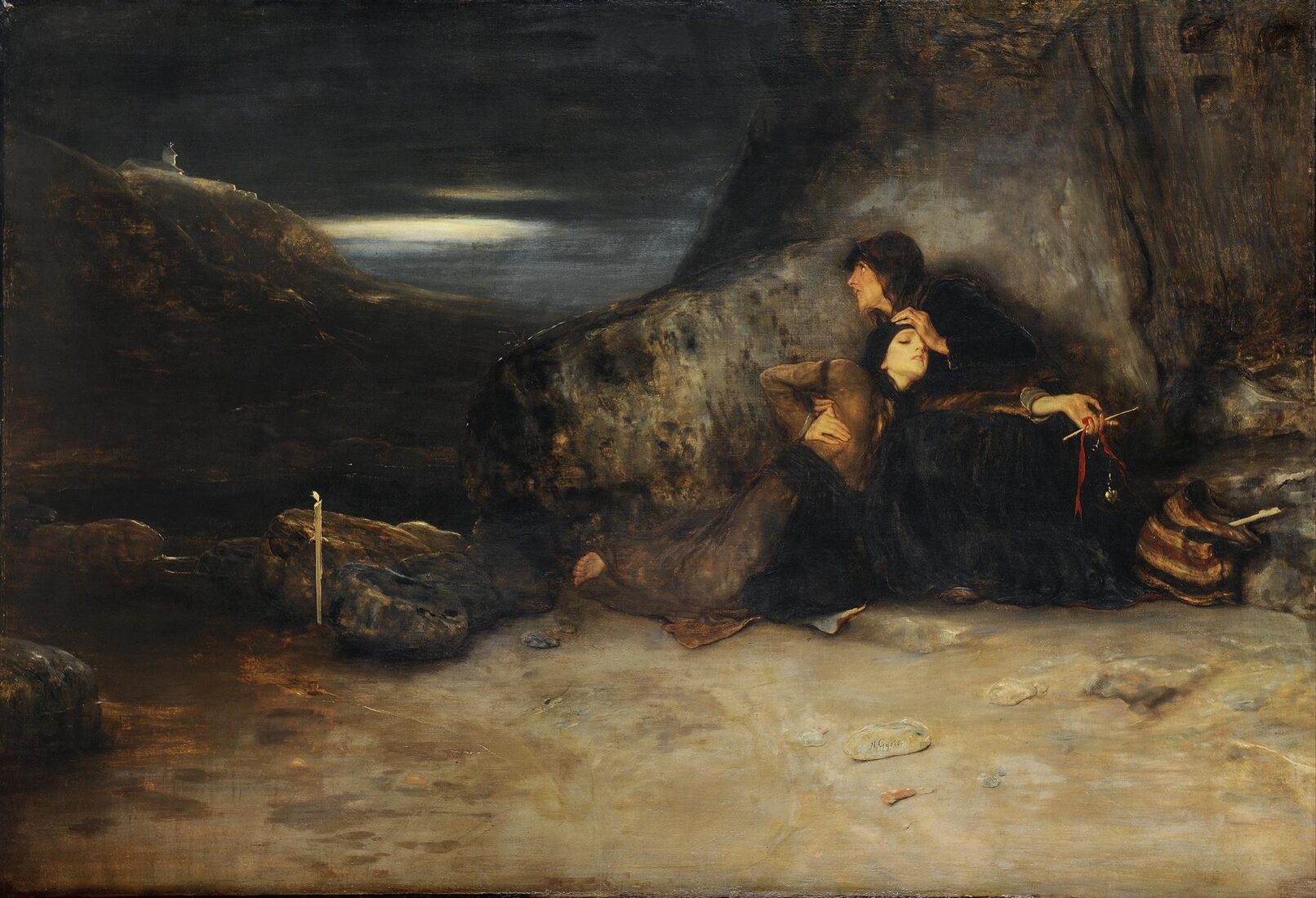
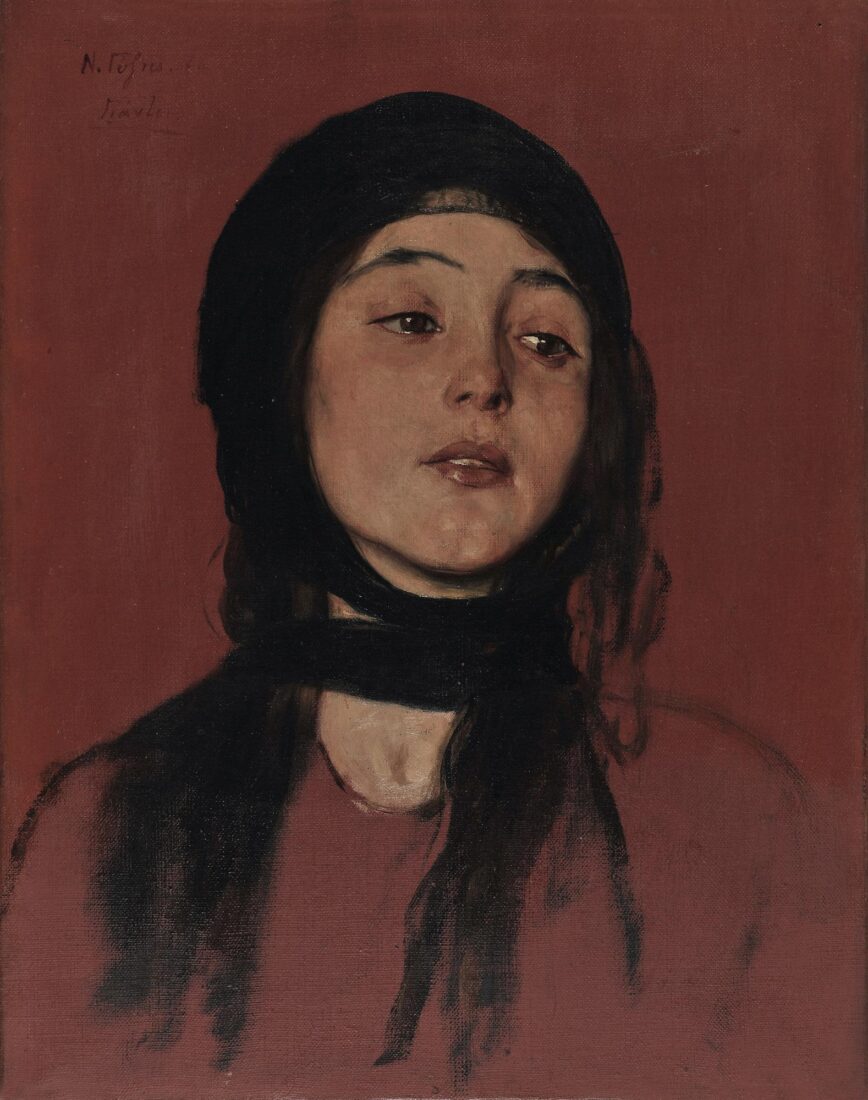
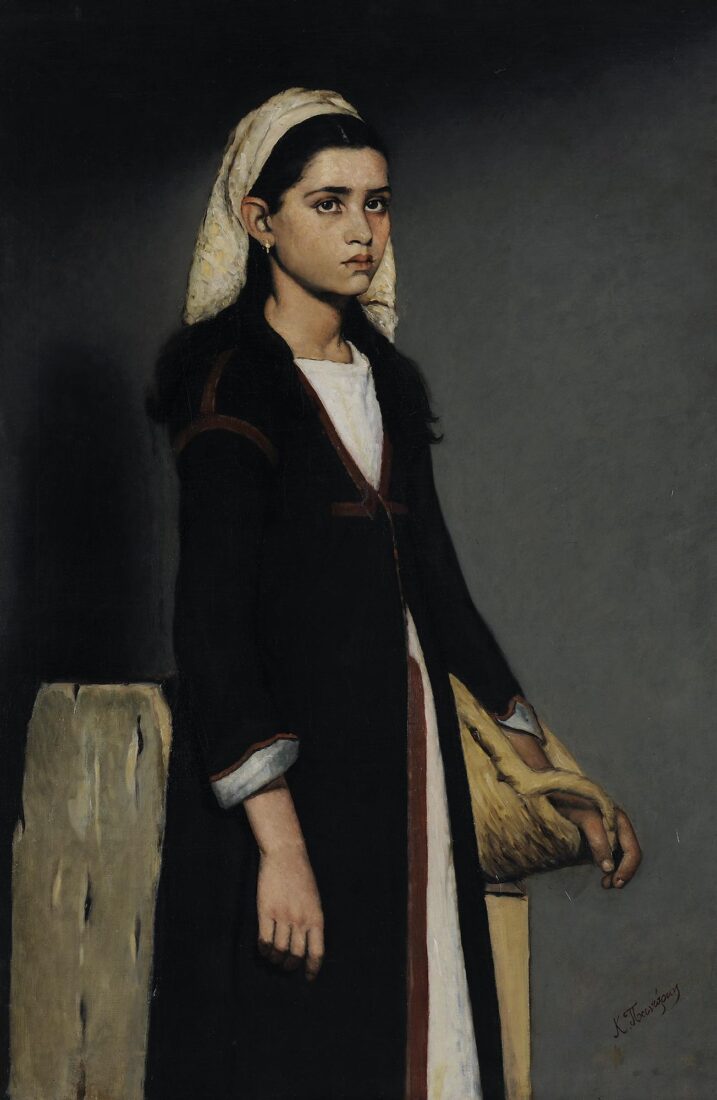
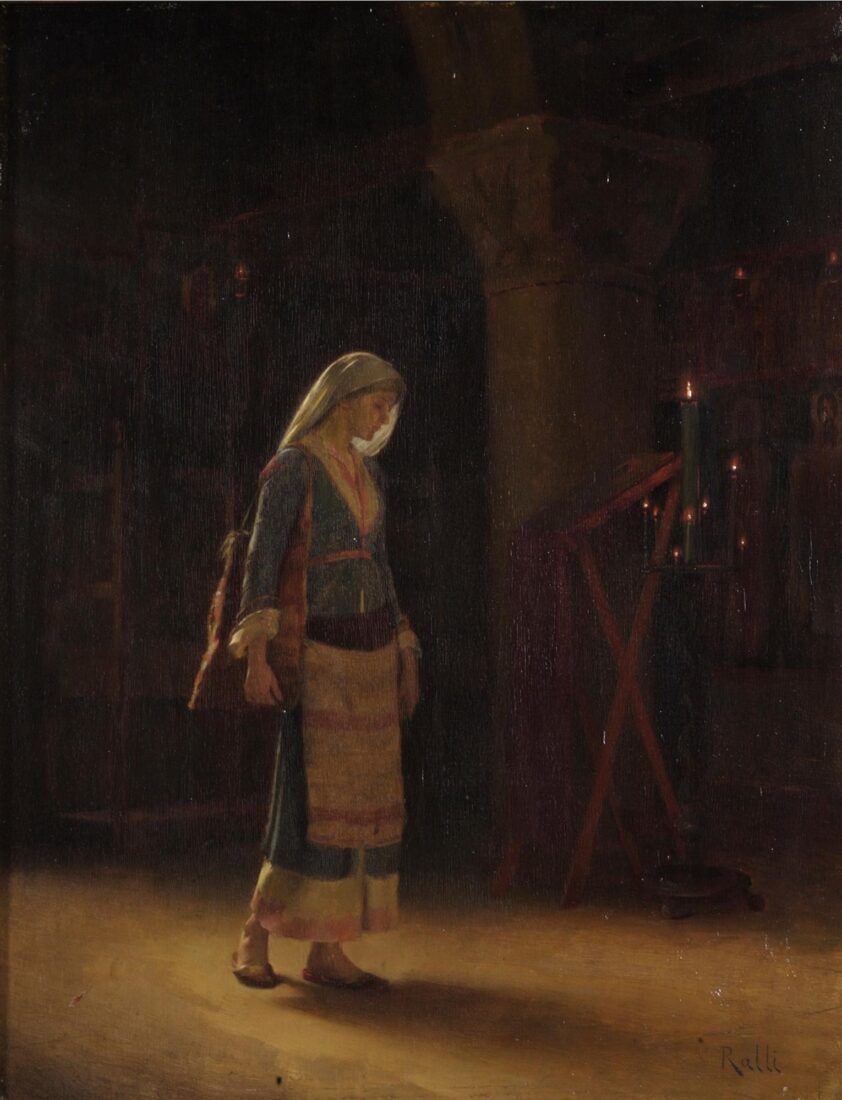
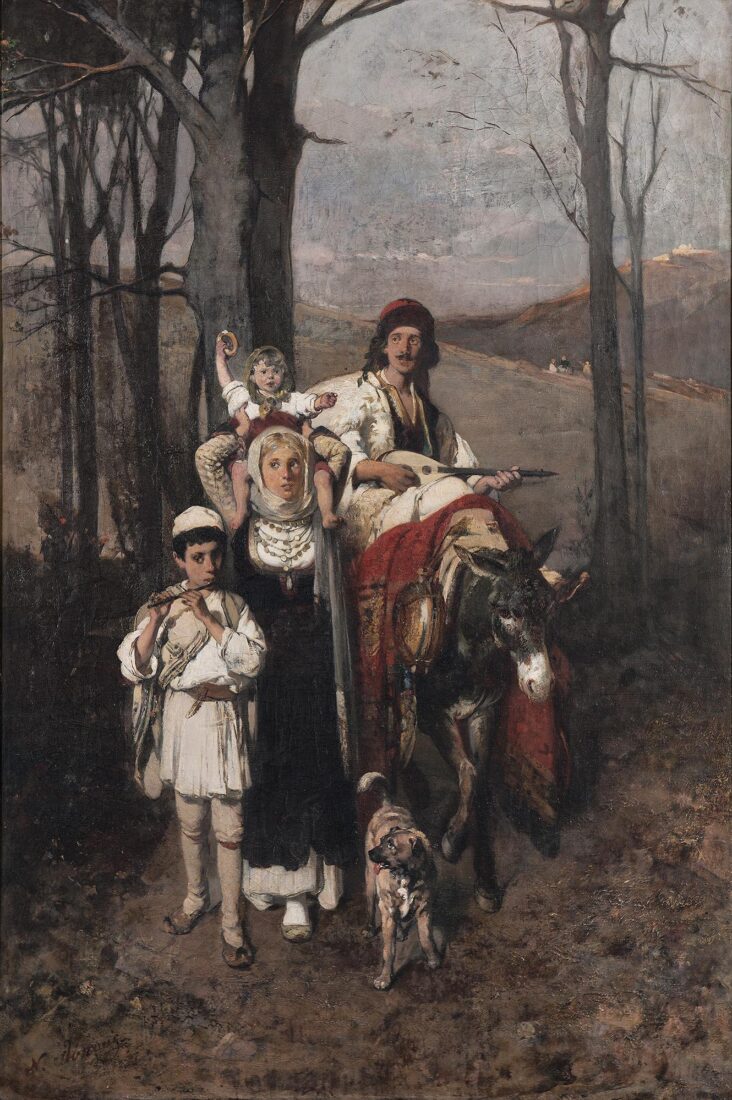
Nikephoros Lytras is considered as the founder of the Munich School. Appointed as Professor at the School of Arts in 1866, upon his return from Munich, he helped shape generations of Greek artists.
Here is one of Nikephoros Lytras’ characteristic genre paintings. A family – the father, the mother and their two children – are on their way back from a holiday on Mount Penteli. It is wintertime, as the trees are bare. Everyone is in their special holiday costume. The father is playing the lute, riding the donkey, which is decorated with colourful blankets. A wine flask hangs from the saddle. The mother follows on foot with her youngest child on her shoulders, a cookie from the feast in its hand. The eldest son walks by the mother, accompanying the lute with his flute. A gleeful dog is in front of them. The merry procession is climbing down the hill towards the viewer. It feels as if they were about to come out of the painting and enter our own living space. Their mood is contagious, and the vibrant colours, white, red, black and gold are in harmony with the joyous atmosphere of the scene. Nikiforos Lytras has masterfully and meticulously rendered it, capturing the character and mood of each figure.
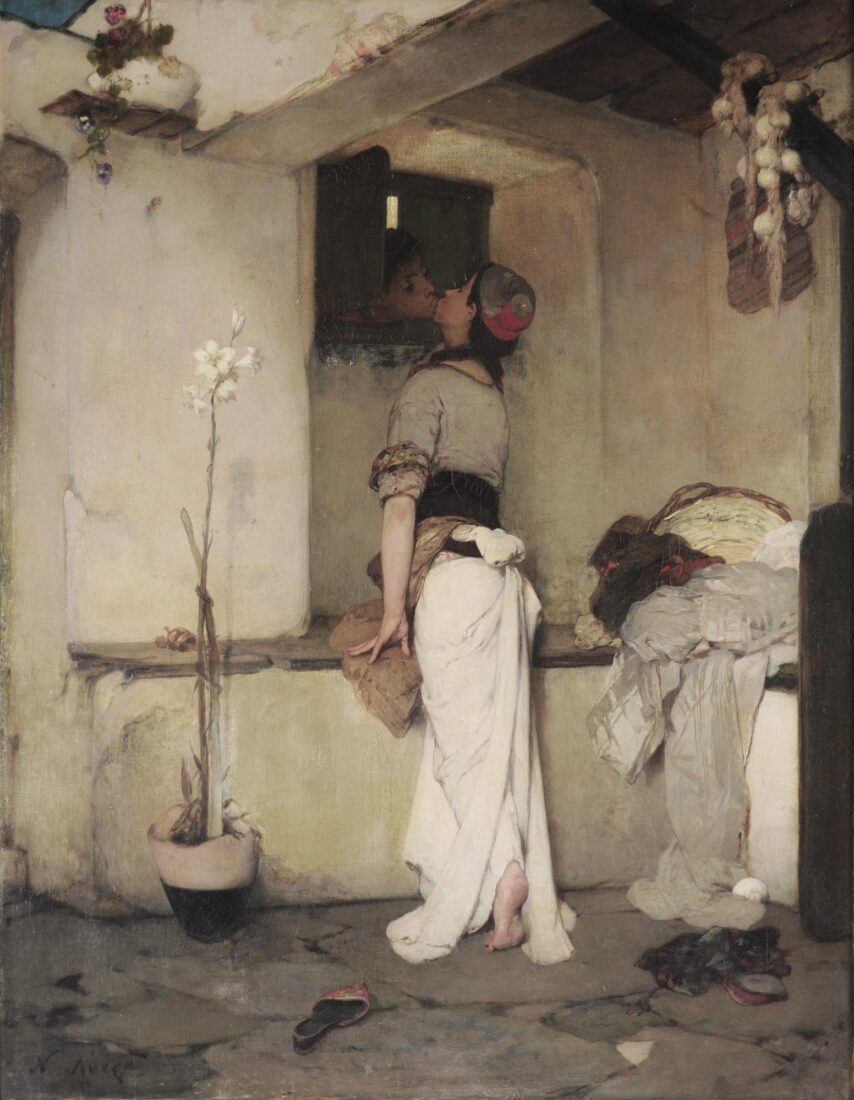
In “The Kiss”, the scene is set in a courtyard, in which a slender girl is rising on the tips of her tows in order to kiss her beloved, whose head can be seen through the window high up. The lily in the pot symbolises purity, while its slender stem echoes the slender girl’s motion. Ochre and white prevail, along with some red on the girl’s fez. The latter colour was a favourite of Nikephoros Lytras’. The abandoned slipper suggests the girl’s rush to meet her beloved, while at the same time marking space, that is, making us part of the scene.

